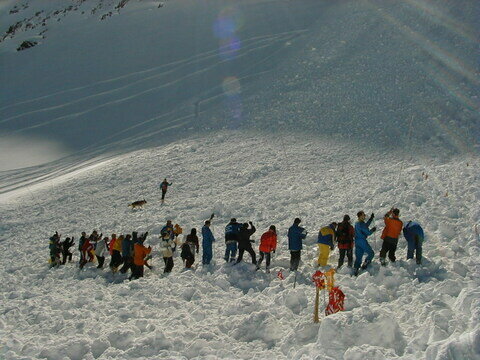Use of Terms and Search Phases in an Avalanche Search with Transceivers

1. A clear structure of the search phases:
-
improves the understanding of an efficient search.
-
allows for a concise scaling within the search.
- facilitates the use of a unified set of terms for the individual search phases that is independent of the means of the search.
2. A unified nomenclature using technically correct terms:
- reduces misunderstandings and erroneous interpretation between different language groups and language regions.
-
enhances the intuitive understanding for the practical activities associated with every search phase.
-
links means of searching and search technology to a specific search phase.
-
provides a qualitative description for the search accuracy and so eliminates false expectations concerning the accuracy of the search, in order to encourage the carrying and use of avalanche probes.
Recommendation:
-
Five sequential search phases shall be used. The sequence of the phases is mandatory.
-
The means of search may be different for the individual phases.
-
The naming of the five phases shall reflect the relative accuracy of the search phase and provide an intuitive understanding of the practical activity.
A: Clue search:
Accident to start of tranceiver search
B: Signal search:
No signal to receiving the first signal
C: Coarse serach:
First Signal to immediate vicinity of search target.
Concise definition for electronic means of search: First signal to the point where the amplitude of the signal in the vicinity of the search target decreases in all directions for the first time.
D: Fine search:
Searching the immediate vicinity to the first use of a probe.
E: Pinpointing:
First use of a probe to first probe hit. - For texts about avalanches, the wording from the glossary published on this website.
Downloads
-
20081011-AVA-REC0009 Begriffe welche die Suchphasen in einer Lawinenrettung mit LVS beschreiben
(PDF) 149 KBDownload
-
20081011-AVA-REC0009 Les termes décrivant les différentes phases dans une recherche ARVA en avalanche
(PDF) 250 KBDownload
-
20081011-AVA-REC0009 Use of Terms Describing the Search Phases in an Avalanche Search by Means of Transceivers
(PDF) 148 KBDownload